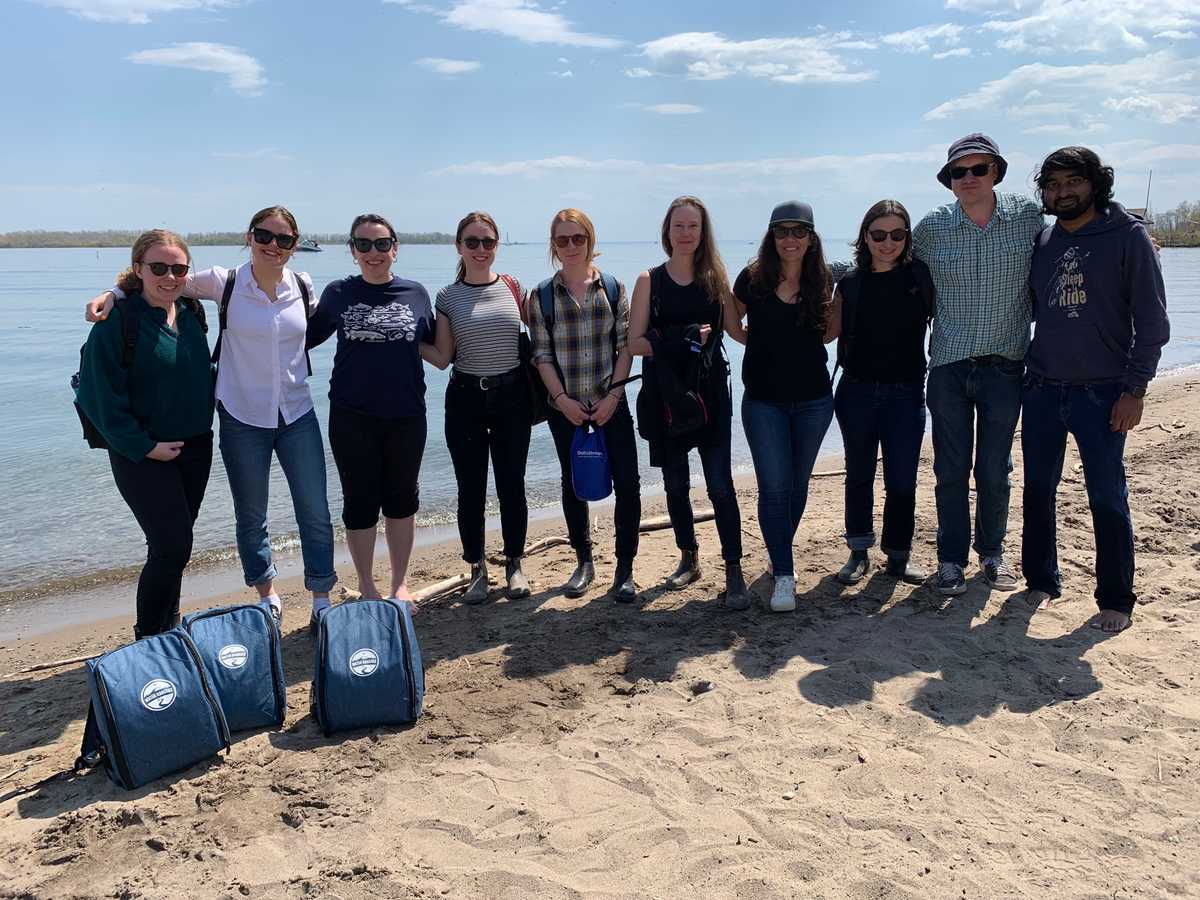
A week at the International Association for Great Lakes Research Conference
By Jessie Reynolds
May 29, 2023
In May, the DataStream team gathered in Toronto for the 66th Annual Conference on Great Lakes Research, hosted by the International Association for Great Lakes Research (IAGLR).
Over 700 researchers from around the Great Lakes region came together to discuss freshwater issues and adaptation to climate change. It was fantastic to connect with organizations sharing our passion for protecting the Great Lakes.
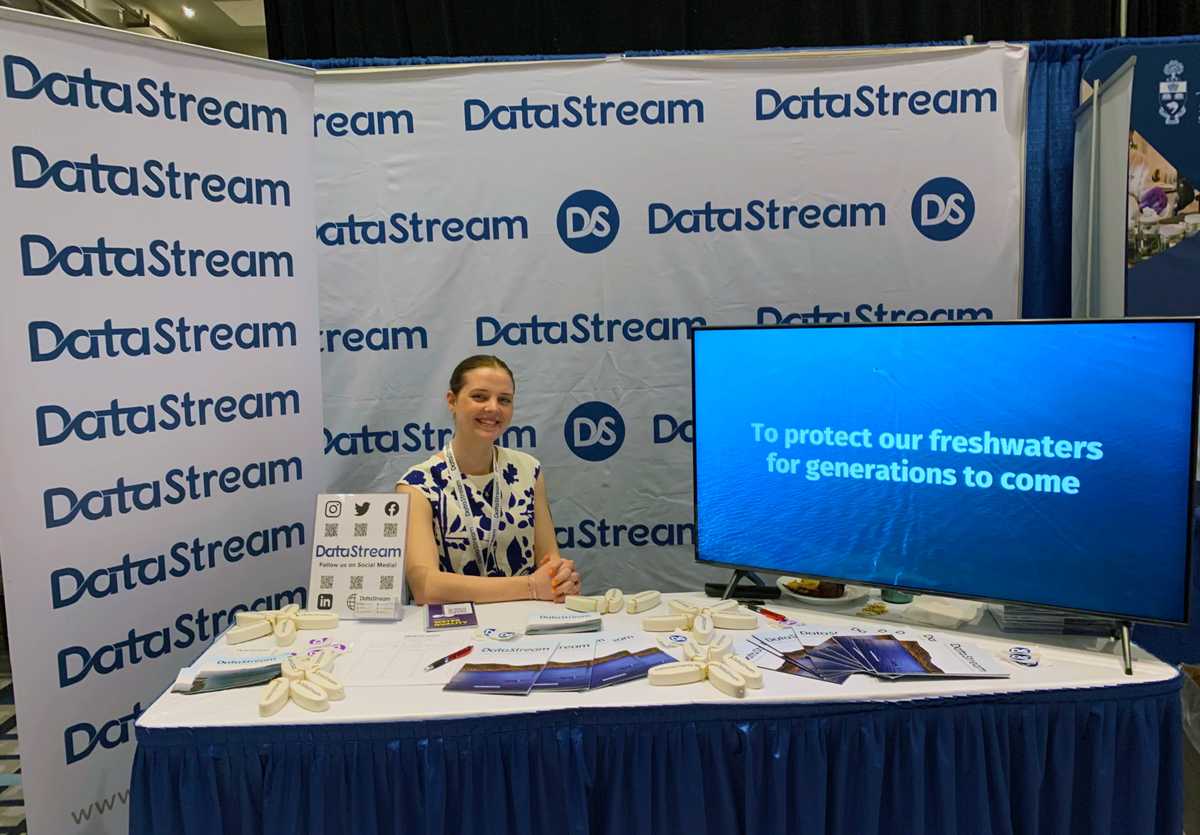
DataStream hosted a booth at the IAGLR conference where we got to chat with the hundreds of attendees about our open access data platform.
It was a busy week! On the second day of the conference, DataStream’s Aislin Livingstone and Lindsay Day discussed Great Lakes DataStream during a session on Open Data Resources of the Laurentian Great Lakes. Our newest regional hub currently holds more than eight million water quality data points collected by over 50 organizations.
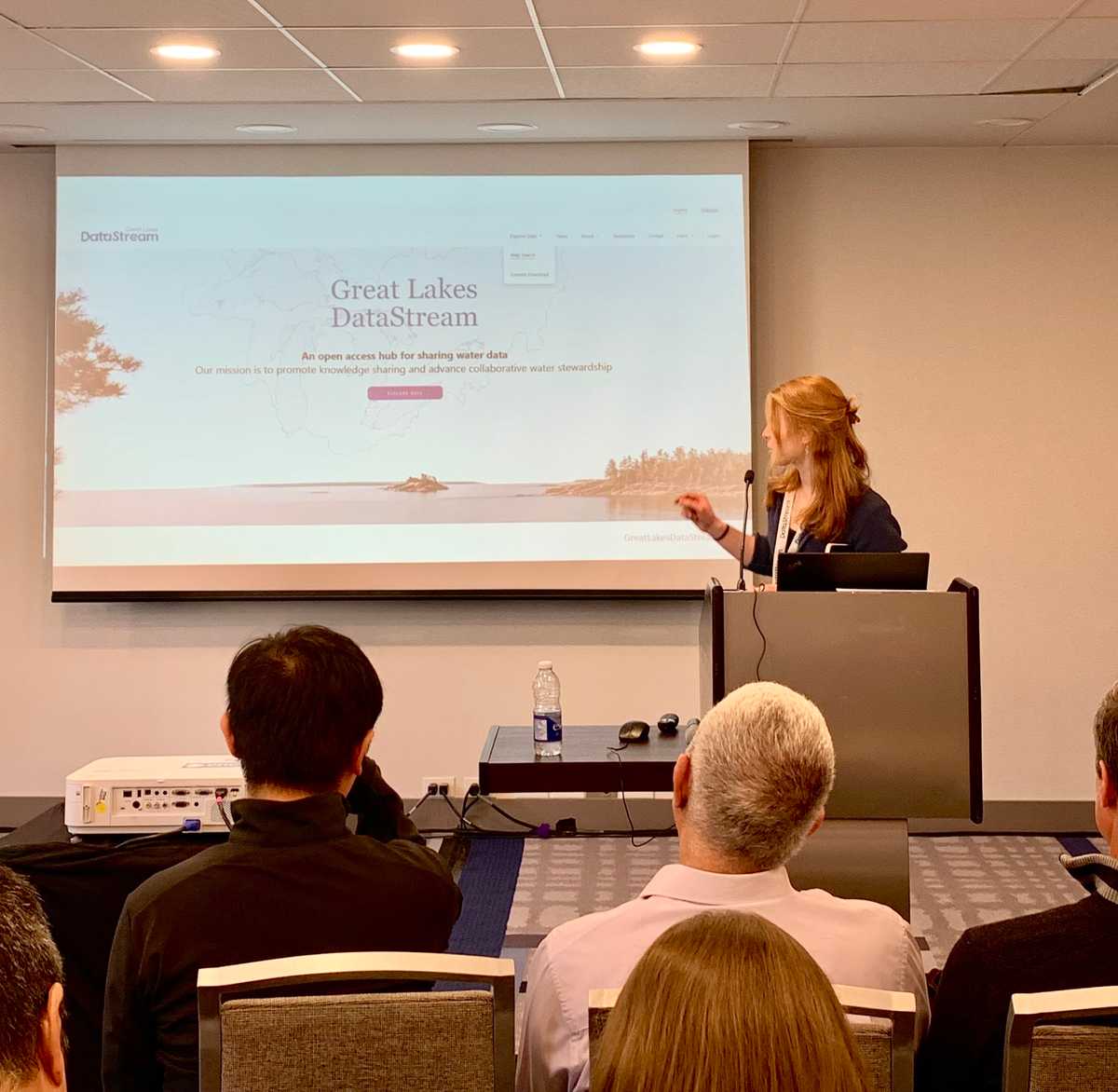
Aislin Livingston introduces Great Lakes DataStream.
The next day, Aislin Livingstone co-chaired a Community Science: Local Action for Resilience and Management session. Participants discussed innovative community science projects occurring around the Great Lakes region. The session featured a number of speakers, including representatives from our regional partners, Guylaine Ross of the Government of the Northwest Territories and Chelsea Lobson of Lake Winnipeg Foundation.
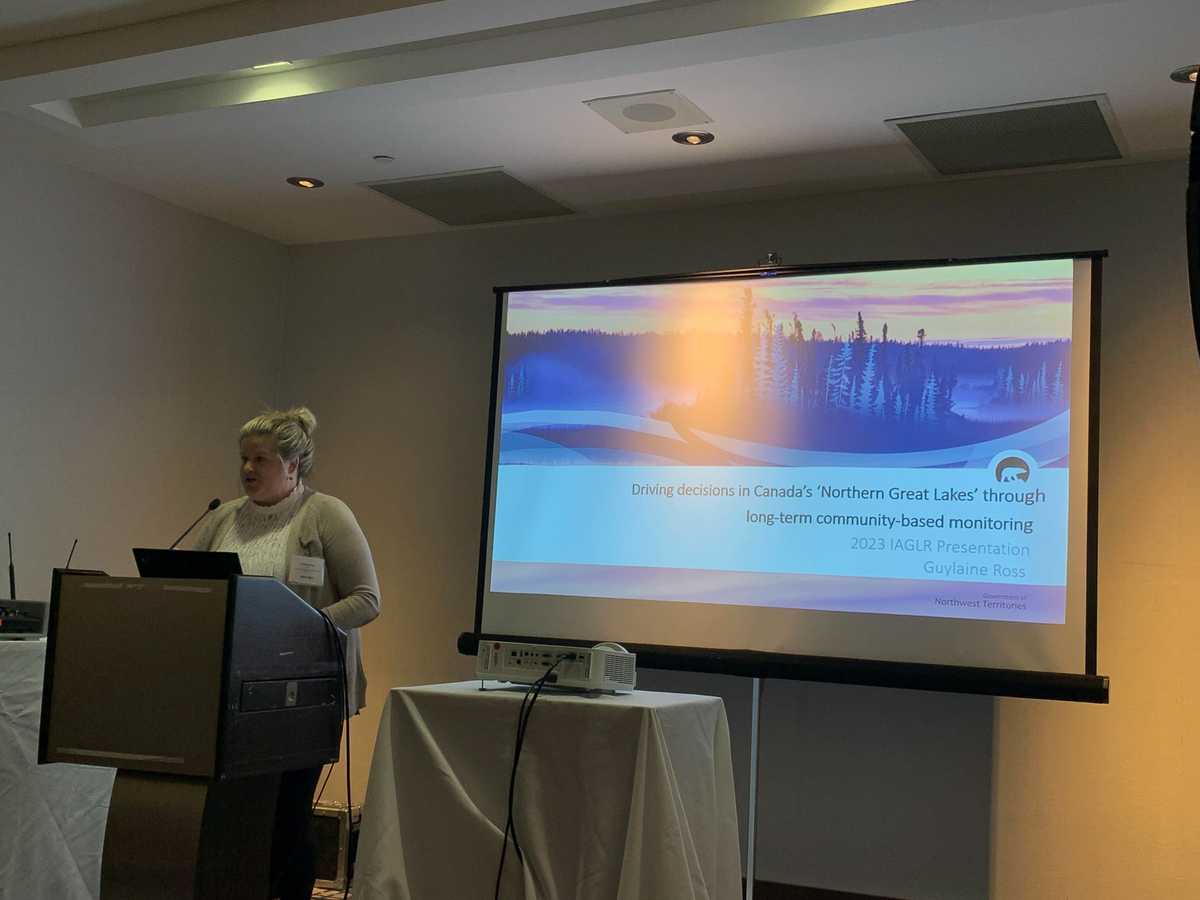
Guylaine Ross of the Government of the Northwest Territories presenting on community-based monitoring at the IAGLR conference.
DataStream’s Carolyn DuBois spoke during the Seagull Users Livestream hosted by Great Lakes Observing System (GLOS). Carolyn discussed data sharing, how the data is being used, and the similarities and differences between the Seagull and DataStream platforms. We are especially excited about the new connection between the two platforms, which makes datasets published on Great Lakes DataStream discoverable on Seagull.
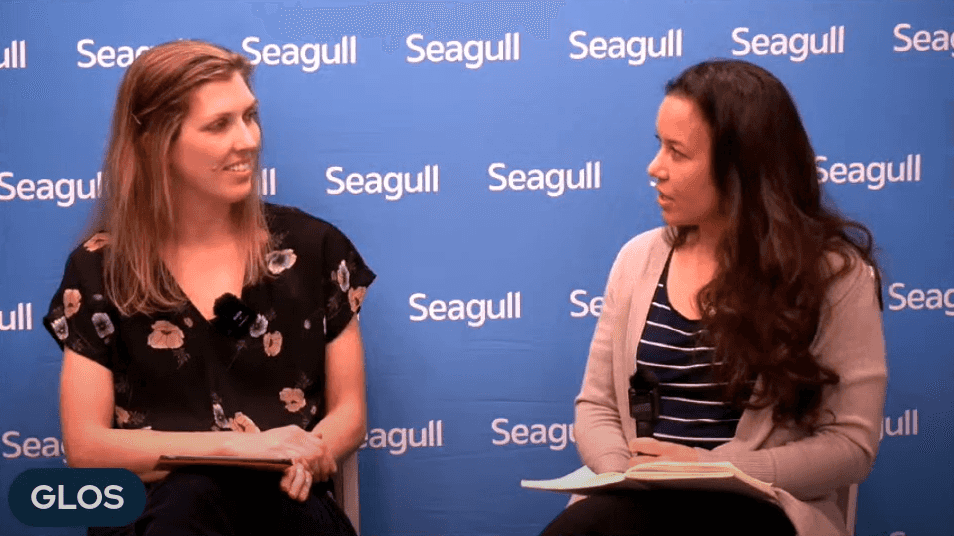
Carolyn DuBois speaking with Shelby Brunner (GLOS) during a live stream about open data sharing.
After the conference
Later in the week, the DataStream team got outside during a trip to the Port Lands, Toronto’s eastern waterfront. Waterfront Toronto ’s Ken Dion gave us a tour of the massive revitalization project at the Don River. Our team learned about the $1.25 Billion Port Lands Flood Protection Project which will significantly improve water quality in the Don River and Lake Ontario.

The DataStream team taking a tour of the Port Lands and Waterfront Toronto’s river revitalization project.
Later, the DataStream team went water sampling with Water Rangers Gabi Parent-Doliner. On the shores of Cherry Beach, Gabi taught us how to use Water Rangers’ test kits to sample standard water quality parameters like temperature, conductivity, pH, and dissolved oxygen. It was awesome to get outside and experience data collection on the ground.
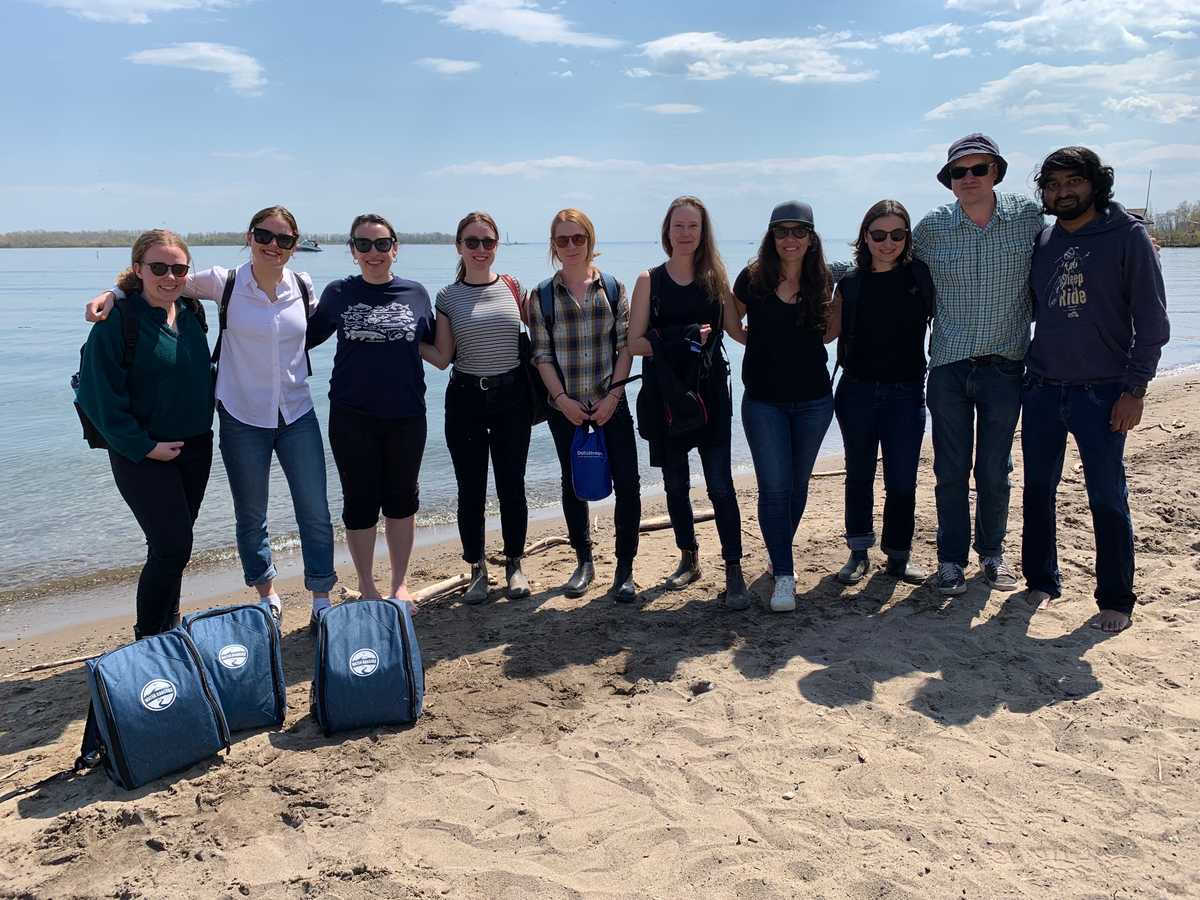
The DataStream team with Water Rangers’ Gabi Parent-Doliner (third left) learning how to sample water quality at Cherry Beach.
Overall, our week at the IAGLR conference was filled with fascinating discussions and new connections. Our team was inspired by the ingenuity and tenacity of the researchers, Indigenous groups, NGOs, and government workers all working towards a common goal of protecting the Great Lakes.
While there is still a lot of work to do when it comes to freshwater issues, events like the IAGLR conference are a valuable reminder that there are countless people working to create a more sustainable, equitable future for all.

About the Author
Jessie joined The Gordon Foundation in 2022 as Communications Coordinator. Jessie completed her MSc in Biology at Queen’s University and her BScH in Biology and English Literature at Queen’s University. Jessie can be reached at jessie@datastream.org.
The results are in! DataStream's 2023 external evaluation
We asked for your feedback, and you delivered! DataStream is pleased to share the results of our 2023 external evaluation.
Job Posting: Executive Director
The Executive Director (ED) will play a pivotal role in leading DataStream at an exciting time of growth.
Join DataStream's Pacific Data Drive
Do you collect water quality data in British Columbia or the Yukon? If YES, we want to work with you!


